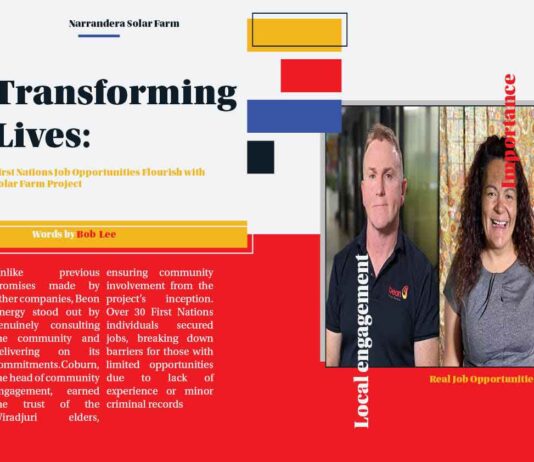Pay the (colonial) rent?+

Internationally-acclaimed Indigenous artist Richard Bell’s latest ‘Pay the rent!’ installation at the Tate Modern in London goes to the heart of some of the intractable problems of Australian white settlement.
The notion that rent is owed challenges the legitimacy of the claim by the British crown to own Australia, since no treaty was ever made with the Indigenous people, who rightly insist they never ceded their land. Moreover, ‘rent’ draws attention to the way in which Australian colonists’ prosperity (among the highest in the world for most of the nineteenth century) was achieved at the expense of Aboriginal life. Rent is owing.
Port Jackson was certainly a most valuable acquisition for the British, but how to pay for it? A Treasury subsidy was not a sustainable solution. Practically everything had to be imported. But the unending desire for imports could be taxed, providing the colonial government with a stream of revenue. Far more significant, export earnings were required and these could only come from land and coastal waters. Thus, early in British colonisation there emerged an alignment of interests between the British government, the colonial government, and the colonists in taking Aboriginal resources and dismissing claims for native title. This coalition of interests was further strengthened after 1830 when the practice of land grants was phased out and crown land transferred to private ownership through purchase or lease.
Revenue flowed, accounting for one-third of all colonial government income. Some of this money was used to pay for assisted immigration which targeted young single women and families with useful skills, boosting the white population, increasing the size of the economy, and underpinning colonial prosperity. Assisted migrants made up half of all free immigration in the nineteenth century. The alliance was further strengthened after the Australian colonies (except Western Australia) achieved self-government in the 1850s. Aboriginal land then became even more valuable to the colonial regimes when they used it as collateral for government borrowing in the London capital market. Lenders there required assurance that their loans would be properly serviced as to interest and repayment. Acquisition of limitless land, massive exports from this land, and the ability to continually sell off and lease parcels of land to buttress government revenues together provided the security craved by savers on the other side of the world.
Substantial loans were forthcoming. Colonial governments now had very large sums at their disposal to invest in modernisation projects of benefit to colonists, including sanitation and public health. Moreover, colonists did not have to pay: taxation was kept below 5 per cent of GDP by the revenues generated from Aboriginal land.
Thus acquisition of Aboriginal land made it possible to modernise settler Australia, to increase, manage, and control immigration, and to pay for imported goods. Colonists rode on the sheep’s back and the sheep rode on Aboriginal land. Millions of sheep and cattle invaded Aboriginal communities reducing their food supply which led to malnutrition, causing disease and violence to escalate, cutting trade routes and disrupting Songlines. As a result, Indigenous living standards crashed and First Nations population collapsed, losing four out of five people, some 800,000 over the colonial period.
Rent due to the traditional owners of the land can be calculated by multiplying the prevailing annual interest rate in each colony by the value of produce extracted from their lands.
By 1900 the accumulated total rent was £182.4 million, or $27.7 billion in today’s money This is a massive debt owed to Australian Indigenous peoples. It might be suggested that colonists in Australia were, through their enterprise and perseverance, responsible for making the land pay. However, in the calculation presented here it should be recognised that rent due to First Nations represents just 9.5 per cent of the extracted value – less than a traditional British tithe – the settlers keeping over 90 per cent for their efforts. Contemporaries invented terra nullius to deny Aboriginal people property rights and any claim as landlords for rent from the colonists or the British state.
After Mabo this view is less tenable. But even if the arguments outlined above were dismissed in this way, the concept of rent, and its possible dimensions in real terms, might well be relevant to discussions about financial compensation for Aboriginal loss of life and livelihood, and opportunities forgone. It is important to understand the causal links between dispossession and colonial prosperity.
Some might think that the colonial era is long gone and irrelevant in the 21st century. But economic growth and development are cumulative, land remains vitally important in Australia’s economy and Australia’s prosperity and development today rests squarely on its colonial foundations built on Aboriginal land. As Richard Bell insists, it is time to face up to the realities of unjust enrichment in the colonial era.
David Meredith originally published this article in Pearls and Irritations. David is co-author of Australia in the global economy: continuity and change (Cambridge University Press, 2nd edn 2012). He has written extensively on British and Australian economic history, and British social history and imperialism. Formerly at the University of New South Wales, Sydney and more recently the University of Oxford, he now lives in regional New South Wales. David is currently researching the history of unjust enrichment in colonial Australia.










